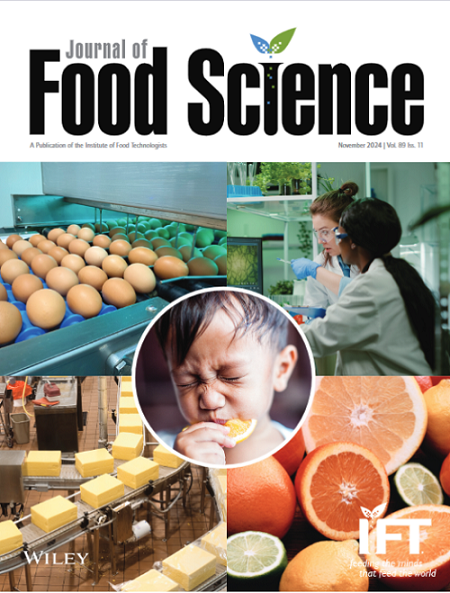Investigation of the quality, antimicrobial, and antioxidant effects of commercial carob molasses and determination of phenolic acids by using HPLC
Abstract
This study examines the bioactive properties and quality of commercial carob molasses, commonly consumed by children in Turkey for tonsillitis relief, while highlighting potential risks. Total phenolic content was analyzed spectrophotometrically, and phenolic acid composition by high-performance liquid chromatography (HPLC). For the determination of health benefits, antimicrobial and antioxidant activity methods were used, and for quality control, pH, 5-hydroxymethylfurfural (5-HMF), ash content, and water-soluble solids were determined. The results showed that there were differences in the bioactive properties of the samples. Sample 2 was found to have the highest antioxidant potential (93.86 ± 8.46 ascorbic acid equivalent [AAE]) and metal chelation ability (56.99 ± 1.91%). All carob molasses samples showed antimicrobial activity against Staphylococcus aureus, Enterococcus faecalis, Klebsiella pneumoniae, Escherichia coli, Pseudomonas aeruginosa, Candida albicans, and Candida krusei, and minimum inhibitory concentration (MIC) values ranged from 200 to ≥400 µg/mL, approaching bactericidal/fungistatic effects. It was concluded that 5-HMF levels in all samples exceeded the 15 mg/kg limit and that many samples' pH values (between 4.71 and 5.18) and ash contents were outside the acceptable ranges. HPLC analysis showed that Sample 2 had the highest gallic acid content (569.423 ± 0.003 µg/100 mg), while Sample 6 had the highest cinnamic acid content (14.838 ± 0.003 µg/100 mg). As a result, it was observed that carob molasses, consumed with the thought that it was beneficial for tonsillitis, was not as effective as expected on the related microorganisms. It was concluded that better quality control in carob molasses production and storage is needed, and stricter food regulations should be implemented for public health.
Practical Application
Carob is a fruit with important nutritional value for both adults and children thanks to its high sugar, dietary fiber, mineral, and phenolic compound content. The molasses obtained from the fruit is frequently used as a food supplement or to alleviate respiratory tract disorders in children. The findings of this study suggest that carob molasses, which is widely used for its health benefits, is not very effective against pathogens associated with respiratory tract disorders and underline the critical importance of improving quality criteria related to production, quality (5-hydroxymethylfurfural [5-HMF], pH levels, and ash content) control, and ensuring its safety after it is placed on the market. This is particularly important for the protection of vulnerable groups, including children, who may be more sensitive to potential risks. It is, therefore, essential that the quality of food products available on the market is rigorously assessed and that health claims are supported by scientific evidence.


 求助内容:
求助内容: 应助结果提醒方式:
应助结果提醒方式:


